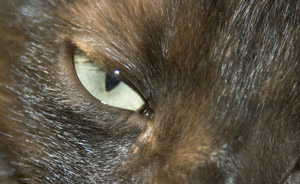Different Shots.
Close up. (CU)
A close up usually shows a person or object in the frame. it shows part of the person or object in detail. An example of this would be a frame containing the characters face, or a frame containing writing in a book. In a close up view, it is easy to see the small details, such as facial expressions and minor things you would not be able to see in a long shot view.
Extreme close up. (ECU)
An extreme close up is used in a film to show small details in a scene. It might be used in a thriller to reveal small clues, for example having an extreme close up of a persons hand reaching for a gun. You would not be able to see the persons face, just their hand - this would create mystery.
Mid Shot. (MS)
A mid shot view is from just below the waist to just above the head. This view allows you to see the facial expressions in clearly as well as the actions and pose they are doing. In a thriller, this shot could be used to see a victim running away from somebody.
Long sh
ot. (LS)
A long shot is a frame where you can see the persons whole body. This would be useful for someone walking or moving.
Extreme long shot. (ELS)
In an extreme long shot you are able to see the whole characters body, and quite a lot of the surrounding environment/scenery. This shot is important if the subject is changing locations, because it allows the audience to see where the subject is. It lets the audience know where the video is taking place.
Over the shoulder shot. (OS)/(OTS)
In a film or video, an over the shoulder shot is taken from behind the character focusing on what is in front of the character. This shot is often used when two people are having a discussion, this enables us to place the characters in their setting, or point of view.
There are many other different shots. The 'inbetween' views, and other shots. For example:
MLS - medium long shot, which is in between long shot, and mid shot. From the top of a persons thighs to their head.
MCU- medium close up, a cross between close up and mid shot, A persons upper torso, shoulders and head.
2 shot: a shot with 2 people in. This is a good way to introduce a convocation.
Different Angles.
Birds-eye view.
This view is taken from directly overhead makes the subject look like their being watched. It puts the audience in a God-like position, looking down on the action.
High-angle shot.
This shot is taken from a high angle, looking down at the subject. It makes the subject seem small, vulnerable, or powerless.
Eye level.
The camera shot is taken from eye level, which is a fairly neutral shot. It allows us to see the characters and what they are doing. Is angle is used a lot in most films. It doesn't take power away from the character, or doesnt add power either. it is neutral
Low-angle shot.
This show is taken from a lower angle than the object, looking upwards at it. This can make the object seem heroic or important, or if the camera is from a persons perspective, it can make that person seem inferior.
Worm-shot view.
This view is taken from a very low angle, as if the camera was the 'worm'. It might be used if somebody is talking past and the camera is on the ground looking upwards. This could create mystery, as you would not be able to see the persons face very well.
Canted.
This is when the camera or frame is tilted to the side. It can create a distortion to the view. An example could be if somebody was being chased by a zombie.
Camera movement.
Pan: this is the movement which scans horizontally. It is often used to pivot, and follow the direction of a person walking.
Tilts: A movement which tilts vertically. It could be used when introducing a new character.
Dolly shots: also known as Trucking or Tracking. It is when the camera moves alongside the action. For example attached to a car, plane or person.
Hand held shots/point of view (POV): this movement can sometimes be 'julty' and inconsistent. It is held by a character or someone in action. It can often give the effect as if you are taking part in the action.
Crane shots: A dolly shot in the air.
Zoom lenses: when the camera magnifies the image while on record. This can be to emphasize a feature of the frame or shot.
Ariel shot: A shot usually taken looking down from a helicopter. You can zoom in or out of the scene to add effect.














